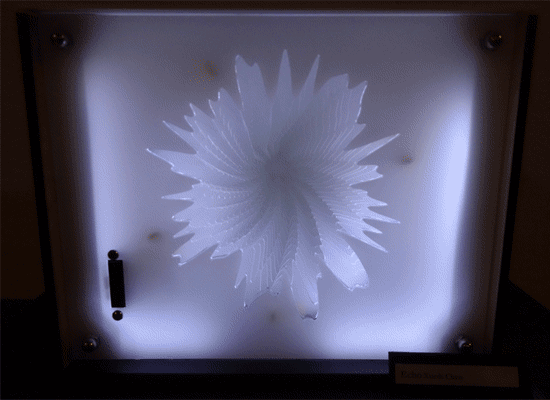

This past Sunday and Monday was the annual Winter Show at NYU’s Interactive Technology Program, or ITP. The program has long been a hotbed for maker culture, from Daniel Rozin’s permanently installed Wooden Mirror in the lobby of ITP’s 4th floor that continues to wow first-time visitors to the school, to students grouping together to compete in competitions that could change the way payphones are interacted with in a city of nearly 9 million.
Always a boisterous affair, the Winter Show is an opportunity to engage with projects and apps that touch on everything from congressional budgets to puppetry, from NYC borough-centric social issues to party-centric installations of audio-visual technology.
The event takes place over an entire floor in the south wing at 721 Broadway in NYC. There are a couple tight corridors, a few ideal spaces for projectors, a few labs with glass walls and locked doors that no doubt get crammed with hardware in the hours before opening as they clear the floor for many hundred spectators. That is to say over the years they’ve gotten good at learning the flow within their own territory and as the title of the program would imply, interaction is key.
Below is a slideshow of some of the projects that I personally took notice of. In previous years the Arduino was more front-and-center, almost as if students were still having to introduce the public to what a microcontroller was and how it operated. This time around the tech was increasingly “under the hood” and discrete, and it was more about the effect or function of the circuit rather than how the circuit was designed. The other trend I recognized can only be described as a translation of data to the physical; so that instead of simply aggregating data and displaying it visually in chart/graph form or interactive tables, there was a move towards physically representing that data somehow. Increasing access to 3D printers (and other tools) no doubt made this a slight trend. And lastly, puppets! It seems like there’s always a puppet project at ITP, and for that I am thankful.









ADVERTISEMENT
Join Make: Community Today



























